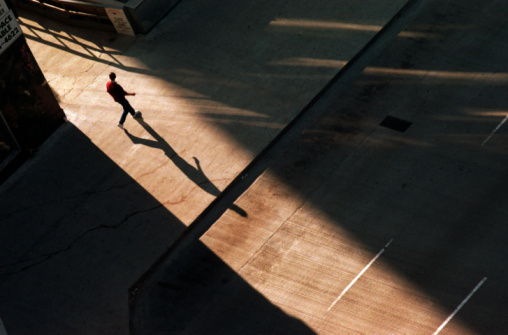Well, there's definitely a very very big difference in pedestrian casualty rates between outer suburban major arterial intersections with low pedestrian counts and downtown intersections with the highest pedestrian volumes.
Using the data from these pages:
A globalnews.ca investigation reveals the most dangerous Toronto intersections for pedestrians are mostly in the suburbs.

globalnews.ca

www.toronto.ca
I looked at 40 major arterial intersections in Toronto, mainly North Scarborough and a few of the more outlying/newer/most suburban parts of North York and Etobicoke.
Combined Daily Pedestrians: 76,561
Combined Pedestrian Injuries (2000-2009): 556
Combined Pedestrian Fatalities (2008-2021): 9
An example of an outer Toronto arterial intersection I looked at that is typical of that dataset would be Sheppard & McCowan
Find local businesses, view maps and get driving directions in Google Maps.

www.google.ca
I also looked at 40 intersections in Downtown with very high pedestrian volumes
Combined Daily Pedestrians: 751,919
Combined Pedestrian Injuries (2000-2009): 515
Combined Pedestrian Fatalities (2008-2021): 2
A typical example of one of these downtown intersections would be College & Bay
Find local businesses, view maps and get driving directions in Google Maps.

www.google.ca
Note that there's 4-5x more fatalities at the suburban intersections despite there being 10x fewer pedestrians using them. The risk of injury for pedestrians is 10-11x higher at the suburban Overall,
the fatality rate for the suburban intersections that is a staggering 40-50 times higher.
And it can probably get worse. If I split the suburban arterial intersections into categories based on daily pedestrians, the fatality rates turn out to be significantly higher for the less busy ones.
Daily Pedestrian Volumes + Injury Rates
<1500 daily pedestrians: 1 injury per 320,000 pedestrian uses
1500-3000 daily pedestrians: 1 injury per 425,000 pedestrian uses
3000-6000 daily pedestrian: 1 injury per 640,000 pedestrian uses
This means the Toronto arterial intersections with the lowest pedestrian volumes might have close to 100x risks of death for pedestrians than the busiest downtown intersections.
So, for the typical 1000 daily pedestrian suburban intersections (ex Albion & Kipling), if you're a pedestrian crossing an intersection like that 6 times per day (ex once to get to your bus stop, once to transfer buses, once to get to your destination, and repeat in reverse to come back home), every day, for your whole adult life (say 70 years), you'd have a roughly 0.5% chance of getting killed that way. The chance of injury would be about 30%. For comparison, the chance of getting killed by someone in a homicide in Toronto during your life time would be about 0.2%, and probably much lower if you avoid the criminal element and make good spousal choices.
And 1000 daily pedestrians is still about 1 per minute. Somewhere like Weston & Rutherford probably gets only 100-200 per day (~1 every 10 min), which is significantly less than the suburban Toronto arterials, so it could be even more dangerous. Also, this is just the risk of death from crossing suburban arterial intersections 6 times a day, it doesn't include other risk areas, like arterial mid-block accidents, minor suburban intersections, people pulling out of driveways without looking, etc.

torontoist.com

www.tvo.org







